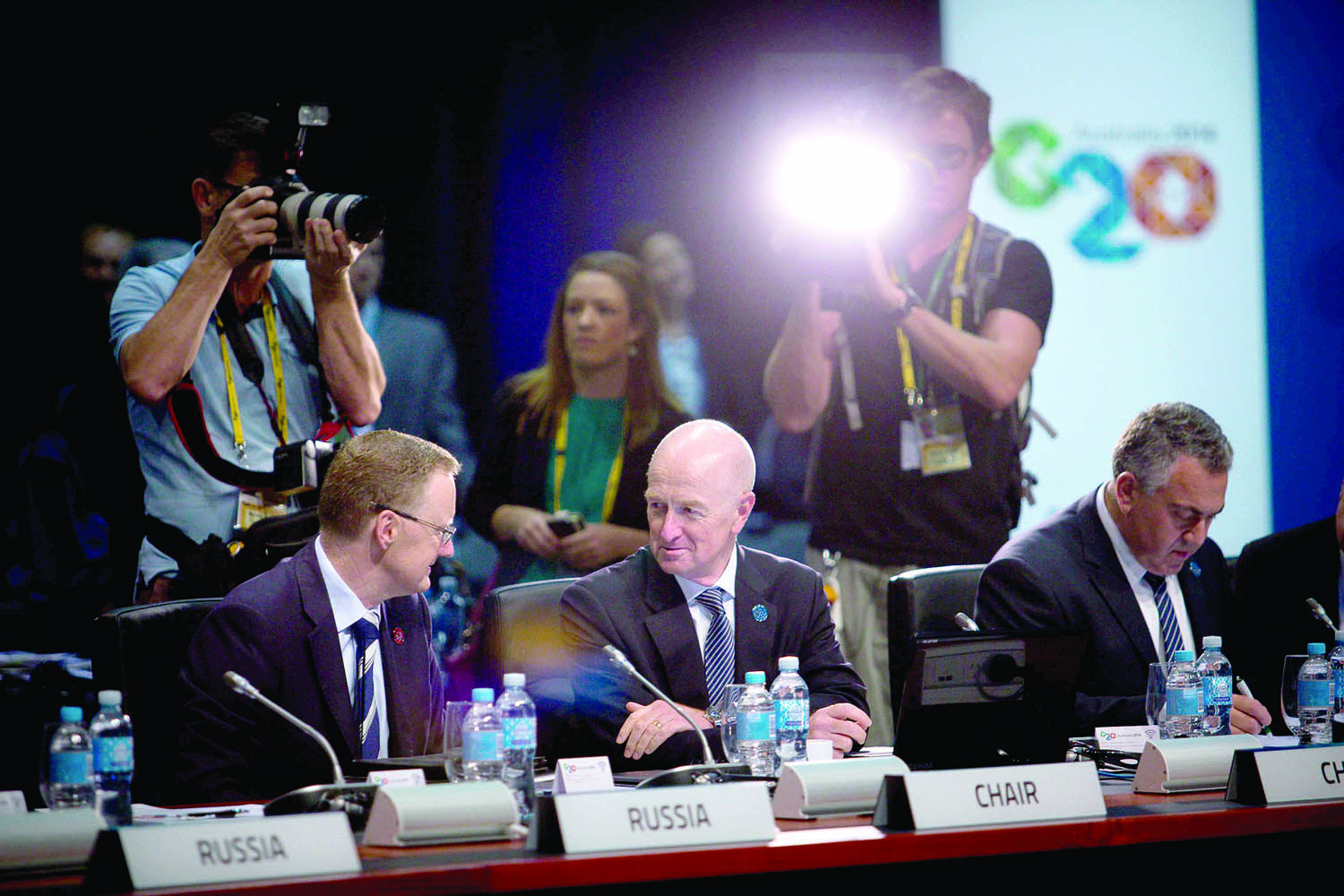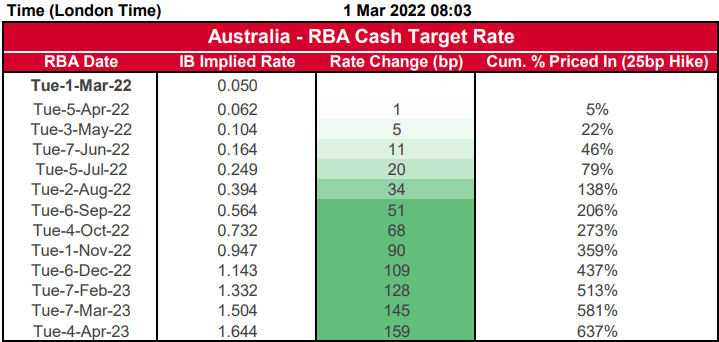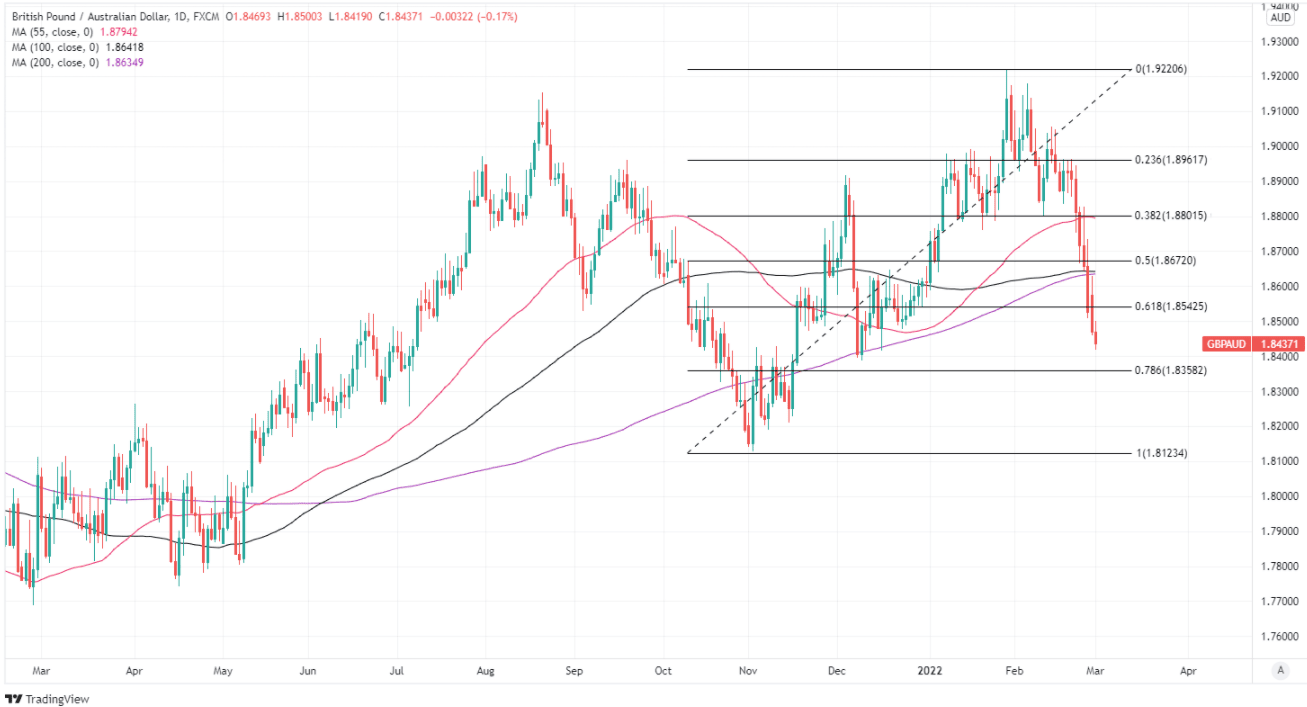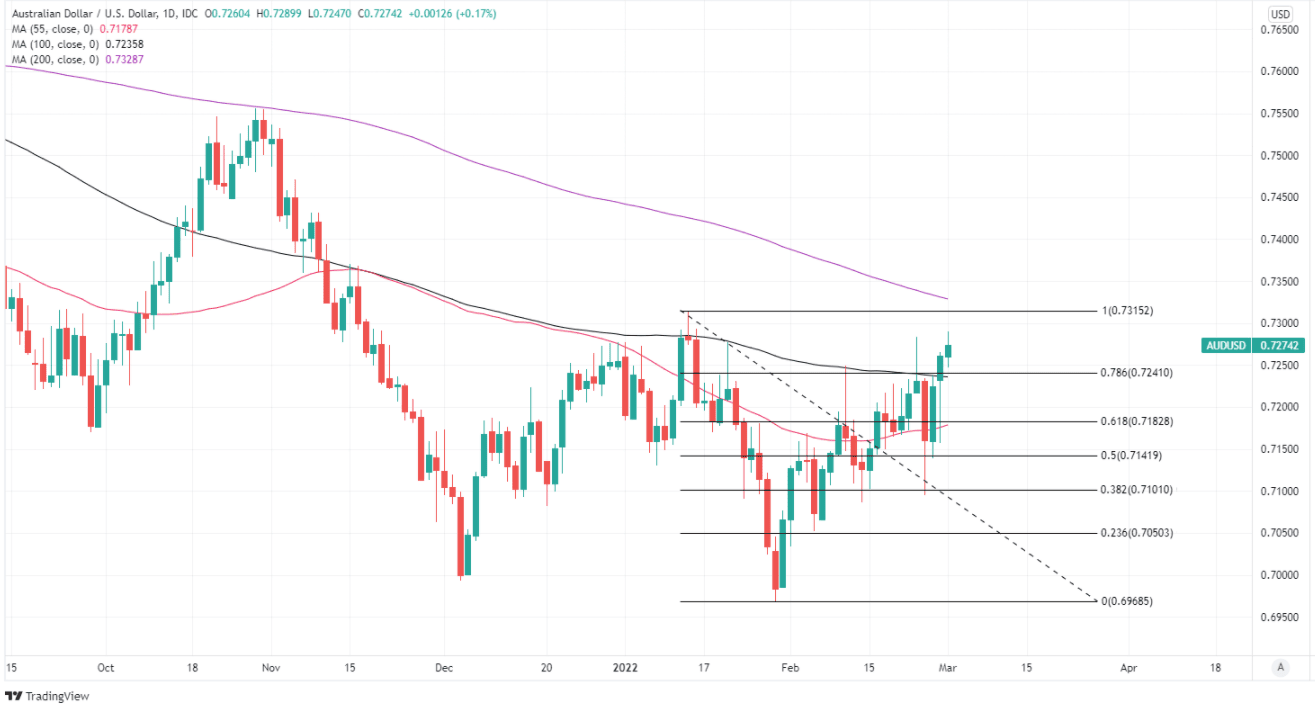Pound / Australian Dollar Rate Risks Further Slippage to 1.8350
- Written by: James Skinner
- GBP/AUD looking for a foothold near 1.8350
- Could steady as market wavers on RBA view
- After RBA notes CPI risk but stays its course
- Cash rate seen near zero for extended period

Above: File image of Governor Philip Lowe (left). Photo Source: RBA on Flickr, reproduced with permission from the RBA press office.
The Pound to Australian Dollar exchange rate was on course for an eighth consecutive loss on Tuesday and could be in danger of slipping further to around 1.8350 over the coming days, where it could potentially find a footing.
Australia’s Dollar lagged behind the Norwegian Krone but was otherwise an outperformer on Tuesday as it and other commodity sensitive counterparts appeared to remain the prime beneficiaries of the Russian attack on Ukraine.
The Aussie received no help from the March policy decision of the Reserve Bank of Australia (RBA), however, which led the expectations implied by pricing in the overnight-indexed-swap market to ease lower for the immediate months ahead.
“The RBA remains in wait-and-see mode and its language continues to be one of patience. We remain comfortable with our view that the rate-hike cycle will kick off in August,” says Besa Deda, chief economist at St George Bank.
Above: Pound to Australian Dollar rate at daily intervals with Fibonacci retracements of November rally indicating possible areas of support for Sterling.
- GBP to AUD reference rates at publication:
Spot: 1.8437 - High street bank rates (indicative band): 1.7792-1.7921
- Payment specialist rates (indicative band): 1.8270-1.83459
- Find out about specialist rates, here
- Set up an exchange rate alert, here
Traders’ market-implied confidence in earlier wagers that the RBA would be almost certain to lift its interest rate at some point in the second quarter had slipped on Tuesday after the bank said it remained unconvinced that wage and inflation pressures have built sufficiently for its two-to-three percent target to be met sustainably over the medium-term.
“The Governor has formally released himself from the guideline in 2021 that rates would not rise until the Wage Price Index lifts by 3%. He is now referring to a broader measure of labour costs which have no specific numerical trigger," says Bill Evans, chief economist at Westpac.
“The explicit guidance in the Statement today, that the necessary signals around wages are broader than the WPI, strengthen our case for August lift off. We continue to downplay any earlier moves given the persistent “patient” theme and the Governor’s preference (appearance before the House of Representatives Standing Committee, February 12.) to see two more CPI’s,” Evans also said.
Australia’s benchmark interest rate was left unchanged at 0.10% and could potentially remain there for some time after the point at which financial markets anticipate that it will rise, which is a prospective future headwind for the currently-outperforming Australian Dollar.

Source: Westpac.
Secure a retail exchange rate that is between 3-5% stronger than offered by leading banks, learn more.
“In the near term, however, AUD appears to be in a relative soft spot when it comes to the market impact of the Ukraine conflict: not geographically over-exposed, but benefiting from risk sentiment resilience and a commodity rally has also positively spilt over into battered iron ore prices. Overnight, strong PMIs out of China also supported iron ore prices and likely helped,” says Francesco Pesole, a strategist at ING.
The RBA’s policy guidance had until recently suggested its interest rate would be unlikely to rise much before 2024, which led financial markets to bet heavily against the Australian Dollar throughout 2021, although Governor Philip Lowe recently implied there is a chance of interest rates rising this year.
He told an Australian parliamentary committee the bank would likely want to see a couple more quarterly inflation reports before it could reliably determine if monetary policy is sufficiently on track to meet the bank’s inflation goal, which suggests some scope for a 2022 rate rise.
But it also appears to preemptively rule out any move before the bank’s August meeting, and financial markets are currently assuming a June move.
Above: AUD/USD at daily intervals with Fibonacci retracements of November decline indicating possible areas of resistance for the Aussie.
That potentially sets up the Aussie for some upset in the months ahead and especially if other central banks continue to lift interest rates in the interim.
However, and for the time being at least, the market’s wagers against the Aussie appear to be in the process of being reversed and this leaves GBP/AUD in danger of a further slide toward roughly the 1.8350 level over the coming days.
“There can be no debate here, the commodity story remains super supportive for the A$. So the key band of resistance at 0.7180/ 0.7240 has given way and the A$ remains in a flag formation that points up to the 200dma at 0.7333,” says Richard Franulovich, head of FX strategy at Westpac.
“We still see weakness developing in the A$ into the March Fed lift-off which is now less than 3 week away. Bigger picture, we would look to use that weakness as an opportunity to buy for strength later in the year,” Franulovich also said on Tuesday.
The Pound to Aussie exchange rate tends to closely reflect the relative performance of both AUD/USD and GBP/USD - the latter of which was trading back above 1.34 by Tuesday - and would be likely to stabilise somewhere around 1.8350 if Westpac is right in viewing the 0.7333 level as a short-term ceiling for AUD/USD.






